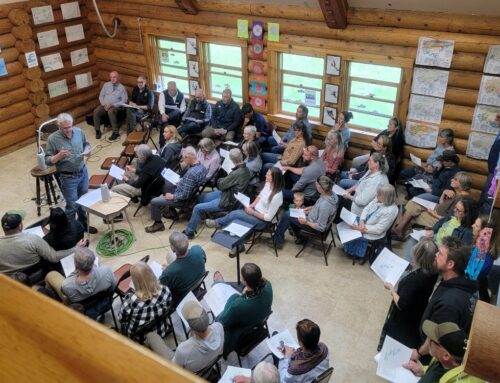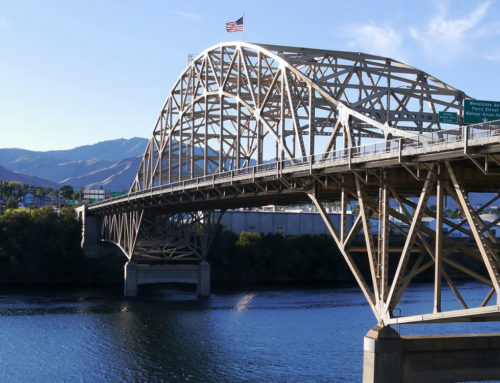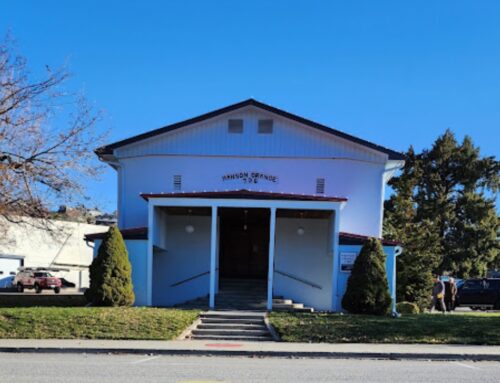Lands across five counties will join the more than 900,000 acres of already conserved forests managed by DNR
information released
Commissioner of Public Lands Hilary Franz on Monday released the locations of 2,000 acres of structurally complex state forestland proposed to be set aside for conservation as funded by the Climate Commitment Act.
The land will join the more than 900,000 acres of forestland that the Washington State Department of Natural Resources (DNR) already manages for conservation in western Washington.
The parcels are spread across five counties – Clallam, Jefferson, King, Snohomish, and Whatcom. The Department of Natural Resources worked with the counties to identify parcels that are most valuable to protecting fish and wildlife habitat and natural and cultural values. These parcels are adjacent to existing conserved high-value habitat areas, improving fish and wildlife habitat connectivity and avoiding isolated small fragments of fish and wildlife conservation.
In addition to these 2,000 acres, DNR will be closing on the purchase of more than 9,000 acres of working forests in Wahkiakum County. Washington state has been rapidly losing its forestlands to development, and for the first time in history, the state is less than 50 percent forested. DNR’s investment in keeping forests healthy and working is critical to protecting fish and wildlife habitat, fighting climate change, and supporting local communities and natural resource jobs. This purchase is the state’s largest property acquisition in more than a decade.
“Our forests are vital for healthy communities and a key tool in the fight against the climate crisis, which is why I am thrilled to have partnered with the counties and Legislature to safeguard over 11,000 acres of forestlands through conservation and sustainable management,” said Commissioner of Public Lands Hilary Franz. “Conserving these 2,000 acres will protect our most ecologically important forests, enhancing habitat for endangered, threatened and sensitive plants and wildlife, protecting biodiversity and habitat connectivity, and supporting high quality watersheds on our public lands.
In addition, with the purchase of more than 9,000 acres of forests, we’re ensuring our working forests keep working for all of us by providing multiple benefits, including carbon sequestration, clean air and water, wood products we depend on for carbon-friendly buildings, and critical rural jobs. It’s a win-win-win for our climate, our communities, and our economy.”
Moving forward, the agency will continue to steward all of these lands to maintain forest health, wildlife habitat, wildfire and climate resilience, and carbon sequestration.
“These investments highlight the importance of working with the City of Port Angeles to protect the vulnerable Elwha watershed and the City’s ability to provide water to its residents. It’s a significant step in ensuring our public water supply is protected,” said Rep. Mike Chapman (D-Port Angeles), chair of the House Agriculture and Natural Resources Committee. “This is a landmark endeavor that reinforces our commitment to sustainable forestry that benefits both the environment, local economy, and our public health. I am grateful for the collaboration between DNR, Port Angeles and the Legislature.”
CLALLAM COUNTY
A 69-acre tract within the Elwha River watershed west of Port Angeles will be preserved. This tract is formerly part of the Power Plant timber sale, which has been canceled. The site is currently managed to benefit local services in Clallam County.
JEFFERSON COUNTY
The largest tract, approximately 950 acres, will be preserved in two sites in east Jefferson County.
The biggest portion included in the proposal is approximately 670 acres around Dabob Bay. The lands are adjacent to the boundary of the Dabob Bay Natural Area managed by DNR, creating enhanced fish and wildlife habitat connectivity. This area is recognized for its intact salt marsh and sand spit plant communities within one of Washington’s highest-functioning coastal spit and tidal wetland systems. It includes mature coastal forests, coastal streams, feeder bluffs, forage fish spawning areas and open marine waters. These lands primarily support statewide school construction and local services.
Commissioner Franz announced the conservation of the lands around Dabob Bay at an event in Jefferson County last month.
The other approximately 280 acres to be protected are near Mount Walker and Notch Pass, and both are adjacent to existing long-term conservation areas. Those lands are currently designated to support schools, fire districts, and other local services.
“Not only are we protecting our special places, but we’re also protecting our future,” said Peter Bahls, executive director of the Northwest Watershed Institute. “Using Climate Commitment Act funding to conserve unique forests and purchase more suitable replacement lands for timber production provides value for all out communities and makes sure that our most high-quality forests will be there for the future.”
KING COUNTY
The proposal will set aside about 290 acres in Tiger Mountain State Forest adjacent to the West Tiger Mountain Natural Resources Conservation Area, thus increasing critical wildlife habitat connectivity for important wildlife species such as cougar, bobcat, elk, and pygmy owl. This area is also important for critical stream systems that support salmon populations. The lands primarily support local King County services and the construction and maintenance of buildings on the Capitol Campus in Olympia.
SNOHOMISH COUNTY
The parcel to be set aside in Snohomish County includes almost 70 acres north of Sultan that buffer a rare and sensitive wetland complex along Marsh Creek. This area has previously been identified as a potential natural area. The addition of the 70 acres will protect the wetland complex, helping maintain it in good ecological condition. This area is recognized for its high species composition and ecological structure with few human-induced disturbances. This land primarily supports local services in Snohomish County.
WHATCOM COUNTY
Two areas in Whatcom County, totaling 650 acres, are also included in the proposal.
The larger area includes an estimated 575 acres southeast of Lake Whatcom. Protecting the large, contiguous block of structurally complex forest within Lake Whatcom Watershed and adjacent to existing habitat conservation will provide the opportunity to use a number of conservation tools there in the future, including the possible creation of a Natural Resources Conservation Area. These lands primarily support the Common School Trust, which funds K-12 school construction statewide, and local services in Whatcom County.
The smaller area is about 75 acres just south of the Middle Fork Nooksack River that supports the Common School Trust as well as local services in Whatcom County. That land is contiguous with other areas managed for critical wildlife conservation provided by DNR’s State Lands Habitat Conservation Plan, thus increasing wildlife connectivity and conservation.
DNR will need concurrence on the parcels from county leadership before they can be transferred. Upon receiving concurrence, the Department will present the finalized list to the Board of Natural Resources.
If the Board accepts the list of properties to be conserved, land transfers will occur as lands are acquired for each trust. Transfers must be appraised for full fair market value, and any acquisitions and transfers will be presented to the Board for approval.
“We applaud Commissioner of Public Lands Hilary Franz, the Washington State Department of Natural Resources, and the Washington State Legislature for conserving 2,000 acres of mature forests across Washington,” said Amy Brockhaus, deputy director of the Mountains to Sound Greenway Trust. “Building on a proud legacy of conservation and stewardship, this critical investment upholds ecosystem health, carbon storage, habitat connectivity, and public access to nature for generations to come.”
“Protecting these 2,000 acres is a big step forward in yearslong efforts to ensure these forestlands can keep supporting critical habitat, cultural and recreational access, and a thriving economy,” said Vanessa Kritzer, executive director of the Washington Association of Land Trusts. “We thank the Legislature for its investment in these projects and hope to see more in the years ahead. We owe it to future generations to protect these vital lands, not only so they can walk their paths and experience their beauty, but also because these forests are key in the fight against climate change.”








